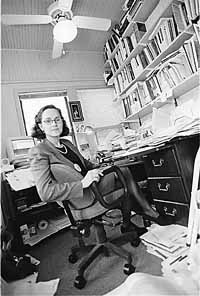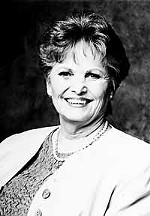The Have Nots
One Family's Plight
By Kevin Fullerton, Fri., March 12, 1999
"I can't sleep comfortable with no insurance," Cordoba says, at home watching daughters Lorana, 5, and Maria del Sol, 9. "I've always had the insurance since I've been in the United States." Ironically, a frequent Four Seasons customer Cordoba has been seeing a lot of lately is the Compassionate Conservative himself, Gov. George Bush, at $10,000-per-plate fundraisers. Bush has opposed full funding of the federal Children's Health Insurance Program, designed specifically for the children of parents in Cordoba's predicament.
In Travis County, the poverty rate has hardly budged during the Nineties boom years, even though, like Cordoba, most everyone is working. Four out of 10 schoolchildren in the county qualify for free or reduced lunches -- no better than the state average. At the county's public health clinics, over half of the patients receive treatment as co-pay (uninsured) customers, and data gathered by a consulting group in 1997 as well as numbers produced by Austin/Travis County Health and Human Services show a steady, though not dramatic, rise in the number of co-pay patients in the clinic system as a whole over the past four years. Typically, these patients earn just above the federal poverty level and pay only a small fraction of the cost of the services they receive. Under the rules of the Federally Qualified Health Clinic (FQHC) health system that Austin and Travis County jointly operate, a patient who has no insurer is asked to pay a percentage of the bill based on his or her income, and Austin/Travis County picks up the the balance.
County Rethinks System
The FQHC system is a godsend for poor people because they are never denied medical attention at a public clinic. But it can become a financial albatross for local government if the cost of subsidizing the uninsured far exceeds the revenue which Medicaid or privately insured patients bring in. Austin and Travis County originally opted to set up an FQHC system, rather than a taxing hospital district, for example, because FQHC clinics capture full cost-based Medicaid reimbursements from the federal government. Those reimbursements used to be set high enough to help subsidize the medical costs of poor, non-Medicaid patients, too, says Austin/Travis County HHS financial officer Mike Abkowitz, so maximizing Medicaid receipts essentially lessened the indigent care burden for local government and placed more of it on the feds.
But Austin/Travis County had no sooner enrolled in the FQHC system than Washington changed the game in 1993, when it introduced managed-care Medicaid and began cutting reimbursement rates. The Medicaid population dropped precipitously in the public clinics as Medicaid recipients who enrolled in managed care chose to see private physicians instead. In 1998, the public clinics treated less than 10% of the total Medicaid managed-care enrollees in the county. Plus, what Medicaid dollars the clinics do receive will be shrunk from 100% of cost reimbursement down to 70% by the year 2003 if the Legislature cuts off Texas' nose to save its (conservative) face by agreeing to exercise that federal option this year.
Fewer Medicaid patients bringing less money into the clinics means local government is stuck paying the bills for the uninsured and getting little in return. This is the tightening noose Travis County hoped to twist out of last year by inviting Seton to take in its non-city residents for a fixed, per-person cost, hoping Seton's vast revenues could offset the cost of treating the uninsured and offer the county a lower, or at least more predictable, health care bill than the one it currently pays Austin/Travis County HHS.
Across Texas, public health districts are scrambling to find ways to compensate for growing uninsured populations and the loss of Medicaid dollars. Privatizing indigent care through an HMO, as Travis County attempted, was an unusual strategy, but essentially an attempt to do what other districts are doing: mixing the insured and uninsured populations. As Texas' only urban county without a hospital district, Travis County is in a special quandary because it has little service to offer privately insured patients. Other urban counties have used their hospital systems to compete for private dollars.
The Dallas County Hospital District, for example, which merged with a local hospital to become the Parkland Health and Hospital System, has developed specialized wings for burn, trauma, and epilepsy patients. Parkland CEO Ron Anderson says his district has been hit hard by an increasing volume of uncompensated care but hasn't enjoyed a tax increase in seven years, so Parkland looks for any opportunity to offer a niche service that might attract an insured client. Anderson says the district is also using special programs to hold onto elderly patients after they turn 65 and qualify for Medicare, at which point many get siphoned off by private doctors.
Parkland's survival strategy is shared by University Health Systems, which functions as the Bexar County Hospital District in San Antonio. Reduced Medicaid funding has cost UHS $20 million in lost revenues this year alone.
"The government needs to restrict itself to those venues that nobody else in the marketplace really wants ... but we have this obligation to provide access for the poor and uninsured of our community, and the reality is, we don't have the resources to do that solely funded by tax revenue," says UHS president John Guest. "So we've got to do some things to create revenue streams and mass that will enable us to serve the poor in a much more capable way. ... We need to figure out as a public service system how to grab you when you need us, and keep you when you don't." San Antonio has one of the proportionally largest uninsured populations in the country, and UHS uses a maximum liability co-pay system to better accommodate their financial situation. Rather than ask patients to pay a fee for service equal to a percentage of the actual costs incurred, as in traditional sliding-scale systems, which can sometimes still result in a relatively large sum owed, the district sets a maximum monthly installment for each uninsured patient. The result, says Guest, has been a doubling of annual revenue from co-payments. "The philosophy is, charge them on what they can really pay, and give them a way to be successful," says Guest.
Unfortunately, both Guest and Anderson report, many public health districts may not find a way for themselves to be successful in the near future. Guest says the current health care marketplace has pushed public health systems into "the vanguard of extinction." Anderson adds, "It's unlikely you'll see a big hospital like ours close, but it's going to be very likely that you're going to see services curtailed because we simply can't continue to do this. ... The uninsured population has gone up and up, and the state does very little about that."
Looking to the Future
|
|
And a scarcity of private doctors in the Pflugerville and Jonestown areas was one of the drawbacks that helped sink the Seton proposal. "I can find you a million dentists in Pflugerville, but I can't even find you a handful of doctors," says Travis County Commissioner Karen Sonleitner.
Music cautions, however, that no matter how attractive the clinics try to make themselves, or how well her company manages to reduce the administrative costs, the system may never achieve the critical mass of paying patients to remain viable in the current market.
"I'm not so sure [even] a private provider could make the clinic system work," says Music, "unless the indigent population [were] incorporated into an active practice." Music says that even with Seton's capacity to mix co-pay patients into its large network, the health care provider would prbably have lost money contracting for the county's indigent care. Seton Healthcare executive vice president Patricia Hayes concurs. "We would have had to go through a year or two for me to say I'm absolutely sure we would have lost money, but I will tell you, we weren't looking at a financial bonanza," she says. Seton, however, had other motives for investing in public primary care: Seton spends nearly $46 million annually for charity care in the Austin/Travis County area, including $21 million for uncompensated care in the emergency room at Brackenridge Hospital. The city meanwhile, pays Seton only $5.6 million to compensate for those services. "If we can have better integration with primary care providers, then [fewer] people are calling the emergency room because they don't have a doctor they see regularly," says Hayes. In the long run, that saves Seton money.
Two of the most prominent proposals for reforming the Austin/Travis County public health care system put forward by the 1997 Indigent Care Task Force called for merging it with Brackenridge into a countywide hospital district or setting up an independent nonprofit organization to operate the clinics as an HMO. Establishing a nonprofit is probably the simplest way to reorganize the system, since it would essentially mean transferring the same administrative duties from the city/county to a new entity. The nonprofit's challenge would be to contract to provide services at a fixed cost, eliciting donations from charitable foundations and government grants to stay in the black. The nonprofit would conceivably be able to more quickly implement programs to compete for privately insured customers, and, as an FQHC, would still be eligible for maximum Medicaid reimbursement, including discounted pharmaceutical service, which a non-FQHC entity like Seton could not offer. But there's no guarantee that the market wouldn't swamp the nonprofit in debt, prompting cutbacks in service or a city/county bailout.
Another option would be to establish a hospital district. This would, of course, open the system to a much wider range of potentially profitable services like those offered by Dallas and Bexar counties. But it would also require brokering a new contract with Seton, which manages Brackenridge, and imposing a "new" tax levy on county residents. The proposal would also need the blessing of the Legislature. And the district would not likely maintain FQHC status, meaning local government would become the principal financial guarantor for public health.
"It's another taxing jurisdiction, and taxpayers normally don't like that," says Travis County Judge Sam Biscoe. "But if you promise that you will make a corresponding reduction in taxes that you have been charging to make up for the new district ... then they will be more supportive. Making that happen, though, is difficult to do and also to demonstrate."
Those solutions, however, have hardly entered the minds of county and city officials. Currently, the focus is on Goggio's attempts to make the clinics run more efficiently; political officials seem to feel the need to prove to the public that they've cut waste from the system before suggesting more drastic reforms. As Commissioner Sonleitner puts it, "You're talking about finishing off the house [with these proposals] and there's not even a good foundation yet." The clinics are certainly nowhere near ready to profit from private business from HMOs, Abkowitz says, with costs per encounter still averaging $150 and the average reimbursement paid by an HMO for primary care around $70. "We certainly don't want to have a public subsidy for insured patients," says Abkowitz, but on the other hand, we may never know how well the clinics can compete until we ramp them up. "It's the chicken-and-egg thing," Abkowitz adds. "Do you put the staff in there hoping clients will come, or do you wait for the clients to come before you start adding the staff?"
One possibility, of course, is that in the next year or two, if more private physician practices open in rural and suburban areas, and if the county can establish better public transportation in remote areas, the county will approach Seton again. Seton's Hayes says she believes the plan offered last time would have been accepted by residents if it had had a strong advocate to explain its benefits. Moreover, she says, some sort of plan which consolidates indigents into a larger system will have to work eventually, because there's no other way to provide their care efficiently. "The problem with these new sources of revenue theories is that it doesn't deal with the core problem, which is the taxpayer's perception that the cost per unit is excessive. So I don't think a hospital district or some other kind of financing solves this basic problem of providing a certain critical mass for a low-density population," says Hayes. "In order to do that you've either got to integrate them into another system ... or get more mass into that system." Hayes says, however, that Seton will make no move to contract for any public health services unless local government asks for help.
Some health care advocates say real solutions won't be found until Travis County accepts that public health care is an inevitable liability for metropolitan government and commits to it. "Austin doesn't get it," says policy analyst Anne Dunkelberg of the Center for Public Policy Priorities. "Every city has to finance indigent care, and this attitude that all is lost because we have to pay for it is out of sync with every city in the country. There shouldn't be this continued reaction that somebody has screwed up to give us this health care burden."
But reforming indigent health care delivery could mean greater costs upfront for a skeptical taxpaying community. On the other hand, can local government afford not to establish a more viable primary care system for the poor? If financial pressures force cutbacks in the current system, everyone agrees, the consequences could be nightmarish.
"If the public drops the ball on public health care," says Music, "and the private market can't pick it up, then what happens to the community" -- those who contract STDs, go without immunizations, or lack prenatal care?
"This isn't rocket science," says Hayes. "If people need health care and they aren't insured, then those of us who are insured end up, in the long run, having to cover more costs. I think we cannot evade that central question ... and we can't think we'll go 'abracadabra' and it won't cost anything. It will."
Got something to say on the subject? Send a letter to the editor.









